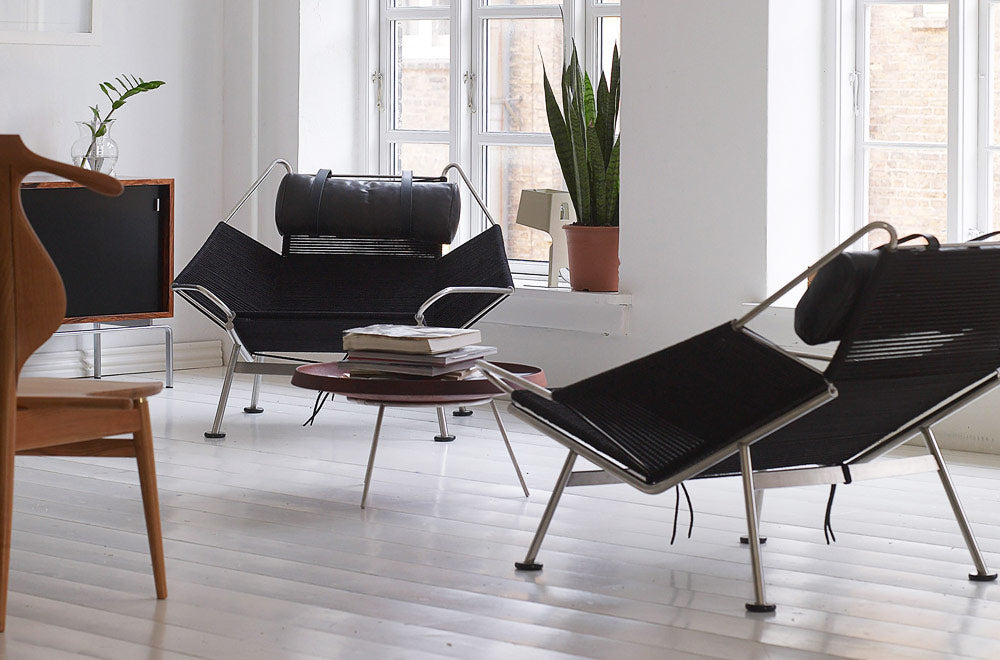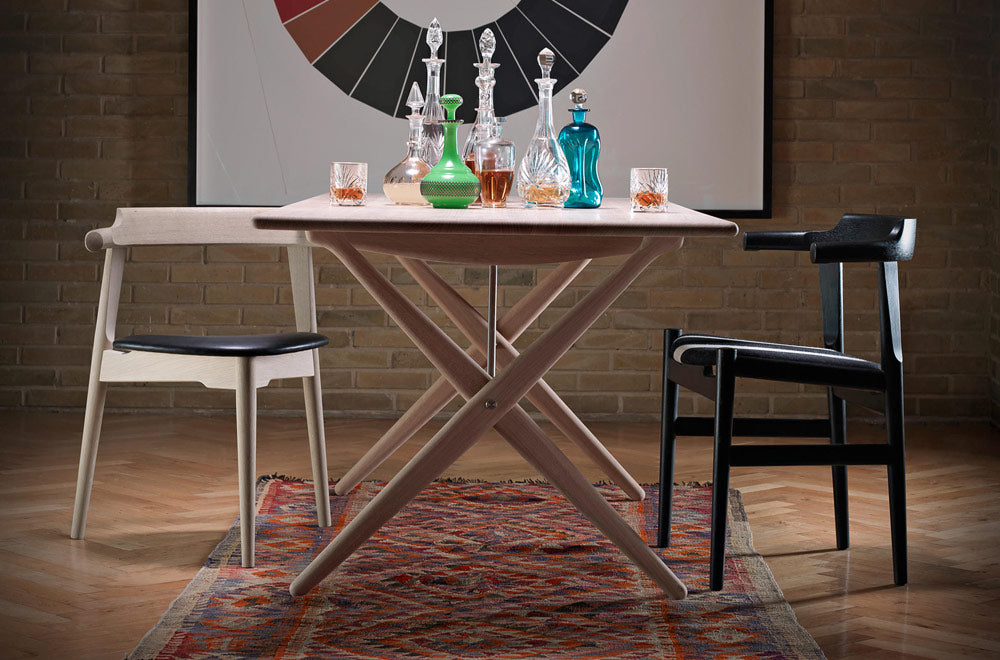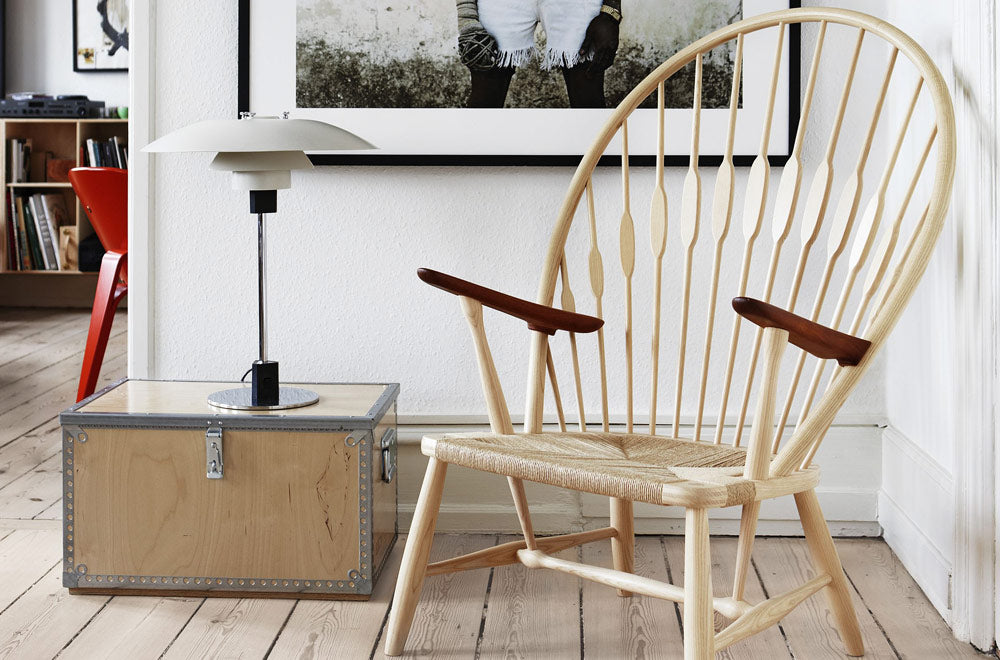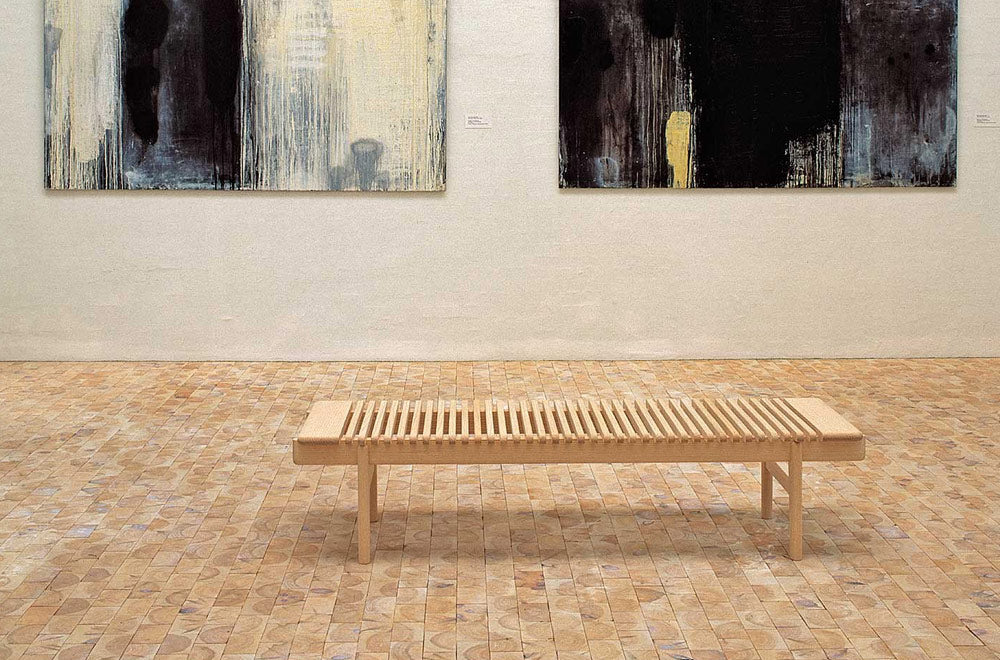Great luxury sometimes comes in small packages. This is one of Wegner's smallest chairs, but it is an amazing work of art.
Designed in 1952 the Cow Horn Chair is the immediate follow up on the breakthrough of Wegner's career, pp501/pp503 The Chair, and the continuity in shape and philosophy is obvious. But serving a different purpose, Wegner created a chair that was to play an important role in the development of his future work.
Wanting to pay homage to the breathtaking beauty of solid wood manually carved into organic shapes, Wegner decided to make a compact chair. Hence the number of pieces of solid wood used to form the armrests and back was reduced to only two pieces, joined in the middle. The joint obviously needs to be aligned with the grains of the wood with some kind of tenon and could be dowelled, but in this case Wegner decided that instead of hiding the unavoidable joint he would rather enhance it and make it a decorative feature of the design. To obtain the full visible effect, Wegner used wood of a contrasting colour.
This original idea would later become a characteristic trademark in many of his works and it is an important example of his honest and craftsman-like approach to design.
Son of a shoe-maker in southern Jutland, Hans Wegner, finished his formal training as a cabinetmaker with master cabinetmaker Stahlberg in 1930 before starting at Teknologisk Institut in Copenhagen. He soon moved to the School of Arts and Crafts in the Danish capital where he became architect in 1938, and started teaching in 1946.
In 1940 he joined Arne Jacobsen and Erik Møller in Arhus, to design the furniture for the new Arhus city hall. He started to work with 'minister' cabinetmaker Johannes Hansen in 1940 and showed his first furniture in the famous Hansen store on Bredgade 65 in 1941. Johannes Hansen was more than twice as old as the 26 year old Wegner but the unique collaboration between the two became the undisputed backbone of Danish furniture design and the main reason for it's world wide recognition in the fifties and sixties. The Copenhagen Museum of Art and Industry acquired the first Wegner chair in 1942.
In 1943 he started his own design office and 1 year later designed the first of a long series of 'chinese' chairs inspired by portraits of Danish merchants sitting in Ming chairs for Fritz Hansen. In 1950 Wegner designed the “Wishbone Chair” produced by Carl Hansen & Søn in Odense which became the most successful of all Wegner chairs. Most well known for it’s use by Kennedy and Nixon in their famous CBS TV debate of 1960.














